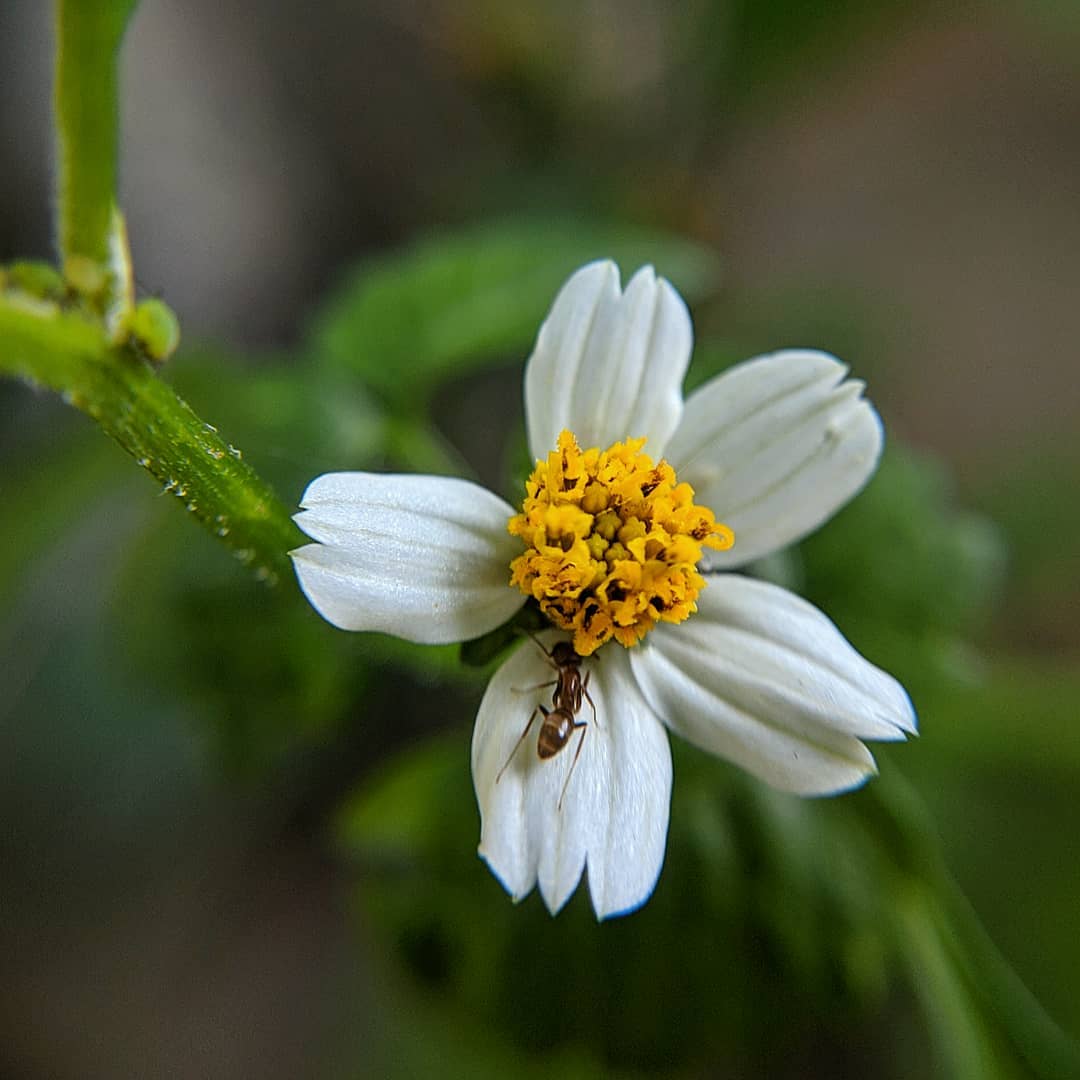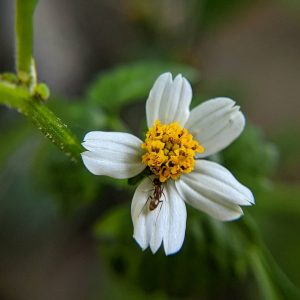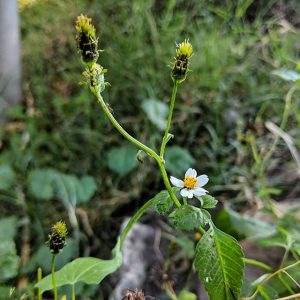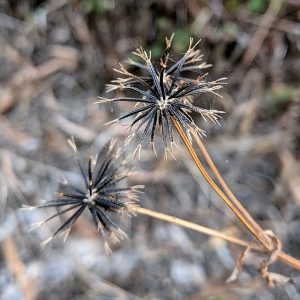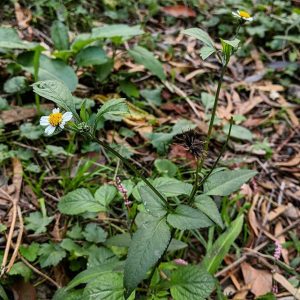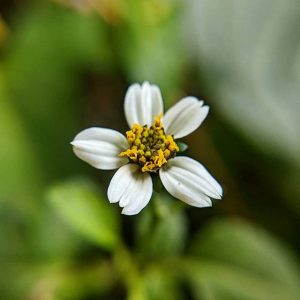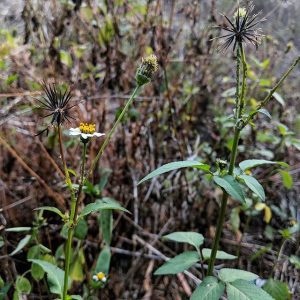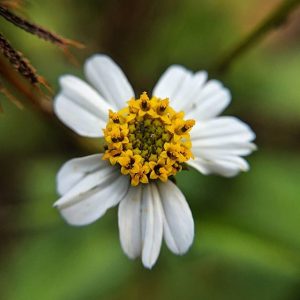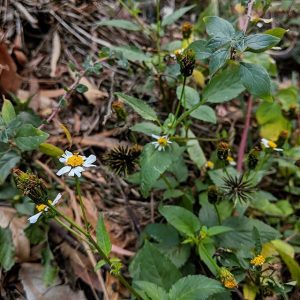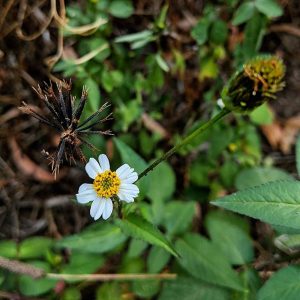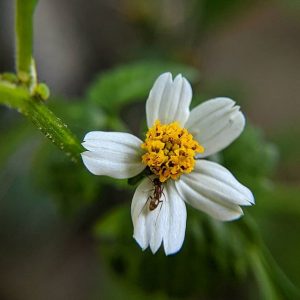Cobbler’s Pegs (Bidens pilosa), also known as Beggar’s Ticks, Farmer’s Friend, Blackjack, a cosmopolitan aster from the Americas that has been distributed globally, to the extent that one study (Pysek et al 2017) claims that it is the second most widely naturalised aster after only the Common Sowthistle.
Cobbler’s Pegs is thought to have been introduced to SE Asia and the Indonesian archipelago by Spanish trade from Mexico via the Phillipines after 1565. From there, the species may have been brought to northern Australia by Makassan fishermen in the 1700s, prior to the English arrival. It is now widely distributed in coastal and riparian Australia, and is particularly prevalent in NSW and southern Queensland.
In that context, the plant is a relatively late addition to Victoria, with the first botanical collection made in 1981 from a picnic area north of Bendigo. It was then collected from Melbourne’s docklands in 1987, and from the concrete drain and weedy banks of Elster Creek (Elsternwick) in 1997. Given that late date, the species is likely to have been introduced and moved around Victoria as a hitchhiker on human clothing and dog fur.
Although there remain a scant 21 digitised collections for the state, Cobbler’s Pegs is now a reasonably prevalent occasional weed of metropolitan riparian areas, particularly in association with infrastructure and with localised settings where competing vegetation is suppressed by waterlogging. Melbourne sits on the edge of the species’ climate envelope, however climate modelling anticipates that future conditions will promote this weed to a far more common status in southern Victoria, akin to its success in NSW and southern Queensland where it is ubiquitous on waste ground and valley paddocks.
The species may be found with or without the white ray florets, and with a notable variety in ray number and presentation. Photographed plants were found on the Merri Creek in Fitzroy North; plants with numerous ray florets (B. pilosa var radiata?) were seen last month on Kororoit Ck but not included here.
View Original Post on Instagram
Search for information about Bidens pilosa in the Flora of Victoria
View information and occurrences of Bidens pilosa on the Atlas of Living Australia
